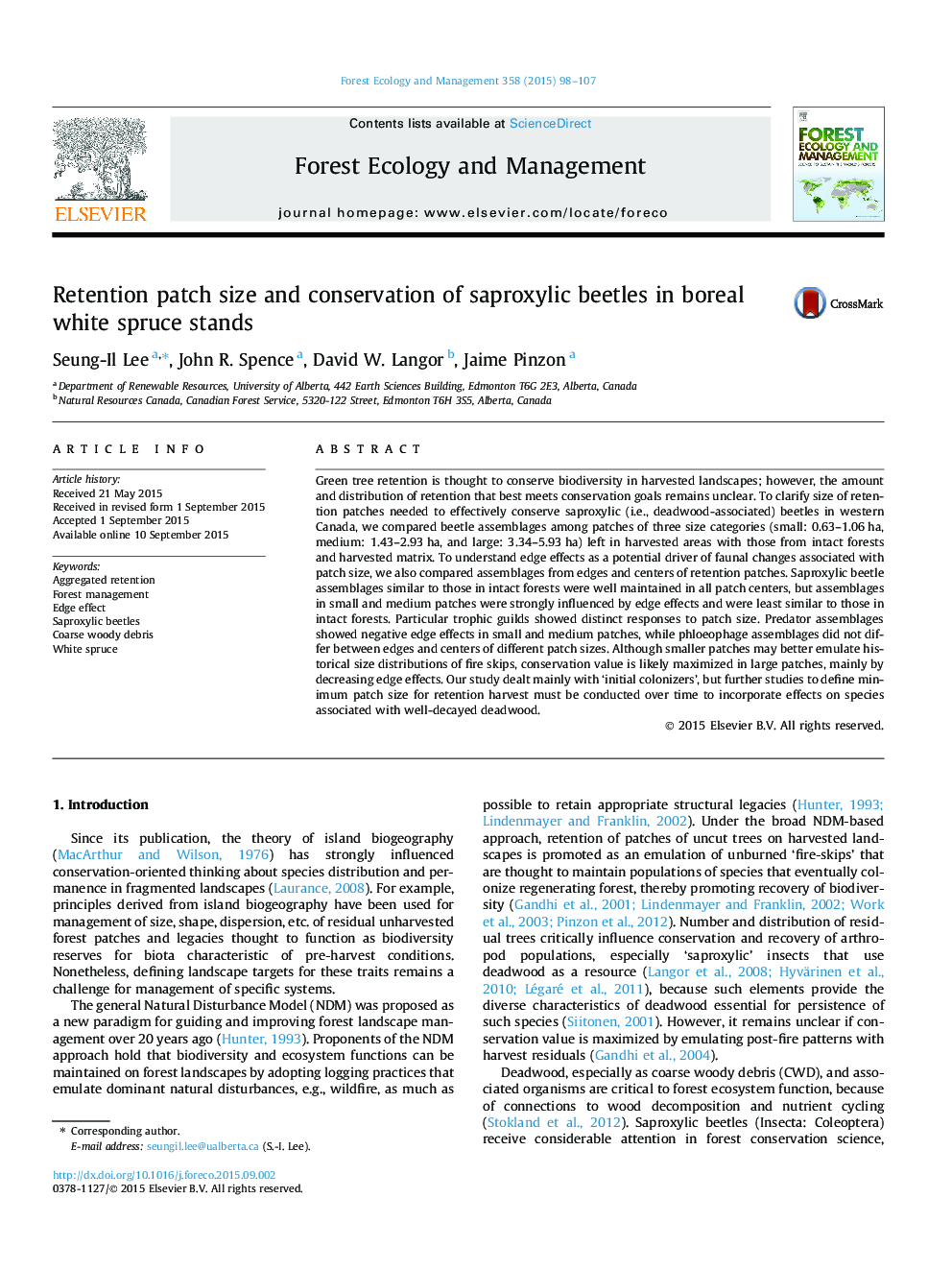| کد مقاله | کد نشریه | سال انتشار | مقاله انگلیسی | نسخه تمام متن |
|---|---|---|---|---|
| 86063 | 159163 | 2015 | 10 صفحه PDF | دانلود رایگان |
• Ten years postharvest, centers of patches ≥0.63 ha had original saproxylic beetles.
• Large patches (3.34–5.93 ha) minimized negative edge effects on saproxylic beetles.
• CWD quality was homogenous and mainly in a single decay class in harvested matrix.
• Leaving patches (<1 ha), as fire emulation, is not the best conservation tactic.
Green tree retention is thought to conserve biodiversity in harvested landscapes; however, the amount and distribution of retention that best meets conservation goals remains unclear. To clarify size of retention patches needed to effectively conserve saproxylic (i.e., deadwood-associated) beetles in western Canada, we compared beetle assemblages among patches of three size categories (small: 0.63–1.06 ha, medium: 1.43–2.93 ha, and large: 3.34–5.93 ha) left in harvested areas with those from intact forests and harvested matrix. To understand edge effects as a potential driver of faunal changes associated with patch size, we also compared assemblages from edges and centers of retention patches. Saproxylic beetle assemblages similar to those in intact forests were well maintained in all patch centers, but assemblages in small and medium patches were strongly influenced by edge effects and were least similar to those in intact forests. Particular trophic guilds showed distinct responses to patch size. Predator assemblages showed negative edge effects in small and medium patches, while phloeophage assemblages did not differ between edges and centers of different patch sizes. Although smaller patches may better emulate historical size distributions of fire skips, conservation value is likely maximized in large patches, mainly by decreasing edge effects. Our study dealt mainly with ‘initial colonizers’, but further studies to define minimum patch size for retention harvest must be conducted over time to incorporate effects on species associated with well-decayed deadwood.
Journal: Forest Ecology and Management - Volume 358, 15 December 2015, Pages 98–107
